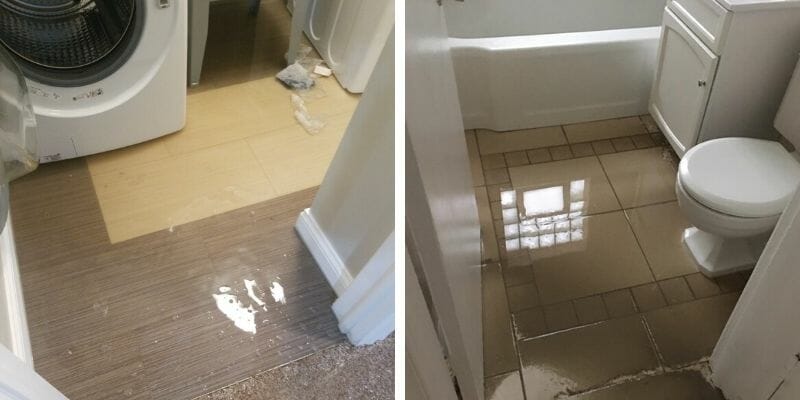Nearly everybody maintains his or her own idea in relation to How to Repair and Prevent Bathroom Water Damage?.

Water damage usually takes place in the shower room due to the water utilized daily. Sometimes, the damage could be a little mold and mildew from the shower. Various other times, it's substantial damages on your floor. Whatever it is, it is always good to recognize the reason as well as avoid it before it happens.
This guide will certainly undergo a few of the common sources of water damage in the washroom. We will also analyze what you can do to stop these reasons from damaging your bathroom. Let's dive in.
These are the usual reasons you would have water damage in your bathrooms and how you can detect them:
Excess Wetness
It's awesome to have that lengthy shower as well as splash water while you hem and haw as well as imitate you're doing, yet in some cases these acts could trigger water damage to your restroom.
Spraying water around can trigger water to go to edges and create molds. See how you spread out excess moisture around, and when you do it, clean it up to avoid damage.
Cracks in your wall surface ceramic tiles
Bathroom wall surface ceramic tiles have been particularly developed for that objective. They safeguard the wall surface from dampness from individuals taking showers. Nonetheless, they are not indestructible.
Often, your restroom wall tiles split and enable some moisture to permeate right into the wall. This could possibly damage the wall if you do not take any action. If you see a crack on your wall ceramic tiles, repair it right away. Do not wait until it ruins your wall surface.
Overruning toilets as well as sinks
As humans, often we make blunders that could cause some water damage in the shower room. As an example, leaving your sink tap on might trigger overruning and also damage to various other parts of the washroom with dampness.
Also, a defective bathroom can create overflowing. For example, a busted commode handle or other parts of the cistern. When this occurs, it can harm the flooring.
As quickly as you notice an overflowing sink or bathroom, call a plumber to help handle it right away.
Ruptured or Dripping Pipelines
There are lots of pipelines lugging water to various parts of your bathroom. Some pipes take water to the toilet, the sink, the taps, the shower, and many other places. They crisscross the small area of the bathroom.
Occasionally, these pipelines can obtain corroded as well as ruptured. Other times, human action could cause them to leak. When this happens, you'll find water in the corners of your bathroom or on the wall surface.
To detect this, keep an eye out for gurgling walls, molds, or mildew. Call a professional emergency plumber to repair this when it takes place.
Roof covering Leakages
In some cases, the problem of water damage to the bathroom could not originate from the washroom. As an example, a roofing leak could create damages to the restroom ceiling. You can spot the damages done by checking out the water spots on the ceiling.
If you discover water stains on your ceiling, examine the roofing to see if it's damaged. After that, call a specialist to assist solve the concern.
Final thought
Water damage to your restroom can be bothersome. Nevertheless, you can handle it if you protect against a few of the causes stated in this guide. Call a professional emergency situation plumbing if you discover any kind of extreme damage.
How to Prevent Water Damage in Your Bathroom?
Water damage repair is an expensive, meticulous, and lengthy process. Unfortunately, bathrooms are the most susceptible rooms to water damage due to toilets, showers, and sinks. Pipes and fixtures wear out over time and are not immune to damage. But all is not lost, as there are ways to prevent water damage from occurring in your bathroom.
Check Your Plumbing
Nothing lasts forever, especially pipes, which can rust and begin leaking over time. You should periodically conduct pipe inspections and pay attention for any musty smells or water stains that may indicate you need water damage repair. Here are some things to check:
Frequently test valves for your toilet, shower, and sink to ensure they are properly working. Check faucet supply lines hidden under vanities and replace when needed. Replace cracked or deteriorating caulking along sinks, tubs, and showers. If you notice a clog in your sink, call in a professional. Since you can’t check the pipes in the wall, keep an eye out for stains, drywall bubbling, musty smells, and excess moisture; if the bathroom is on a second level, check the ceiling of the room directly below for these signs. Don’t Overwork Your Toilet
One of the most common reasons bathrooms need water damage repair is due to overflowing toilets. Save yourself the hassle of cleanup by being mindful and not pushing your toilet to extreme limits. If you have young children, it is especially important to keep an eye on them when they are in the bathroom and to teach them how to avoid clogging the toilet. Here are some more tips to help prevent your toilet from overflowing:
If you have a septic tank, only use septic-safe toilet paper Do not flush anything down the toilet besides toilet paper; items like diapers and sanitary napkins will clog the piping Pay attention to your toilet’s water level: If it’s low, it could mean it is partially clogged or that there is a crack in the toilet bowl https://www.alure.com/home-improvements-blog/resources/how-to-prevent-water-damage-in-your-bathroom

I hope you enjoyed our post on How to Repair and Prevent Bathroom Water Damage?. Thanks a lot for taking the time to read through our piece. Sharing is nice. Helping others is fun. Thank you for your time spent reading it.
Ready to assist, call now!